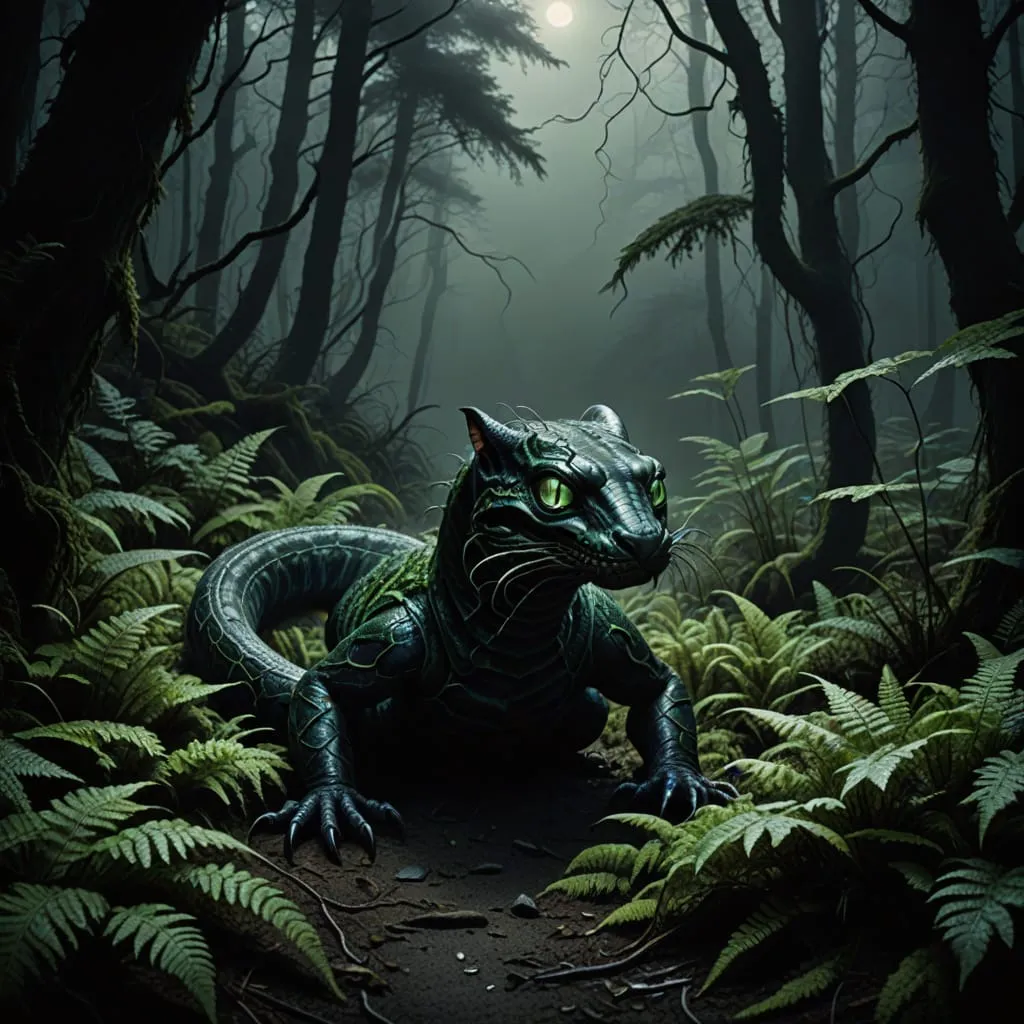High in the European Alps dwells the elusive and mysterious creature known as the Tatzelwurm, a legendary cryptid whose sightings span centuries. Often described as a serpent-like creature with feline features, this cryptid continues to captivate the imagination of locals and cryptozoologists alike.
Historical documentation of Tatzelwurm encounters dates back to the 17th century, with early accounts vividly detailing farmers’ and mountaineers’ experiences. One of the earliest recorded sightings took place in 1779, when a man named Hans Fuchs reported encountering two of these creatures near his farm in the Swiss Alps. Overwhelmed by fear, Fuchs fled home, recounting his terrifying experience in vivid detail to his family shortly before his death, allegedly brought on by fright. This event cemented the Tatzelwurm’s status in Alpine folklore.
In the 19th and early 20th centuries, reports of Tatzelwurm sightings surged. Witnesses consistently described it as roughly two to seven feet long, with a thick, muscular body reminiscent of a snake but notably possessing a feline-like head complete with sharp teeth and bright, piercing eyes. Accounts from Austria, Switzerland, Germany, and northern Italy portrayed the Tatzelwurm as an aggressive creature that hissed and lunged when threatened, capable of swift movements across rocky, mountainous terrain.
Local Alpine folklore offers diverse interpretations of the Tatzelwurm. In some villages, it is considered a guardian spirit of the mountains, a protector of the natural world, fiercely territorial and intolerant of human intrusion. In other regions, the Tatzelwurm symbolizes the hidden dangers of the Alps, embodying nature’s capacity for unpredictability and menace.
Numerous eyewitness testimonies across centuries provide compelling evidence of the creature’s existence, at least within the cultural psyche. In 1921, a Swiss photographer claimed to have captured the Tatzelwurm on camera, though the resulting image remains ambiguous and controversial. More compellingly, in 1934, a report from South Tyrol described a farmer’s confrontation with a Tatzelwurm that aggressively defended its territory. The farmer described the animal vividly, emphasizing its agile, serpentine movement and cat-like aggression.
Cryptozoological theories propose various explanations for these sightings. Some researchers believe the Tatzelwurm may represent a surviving remnant of an unknown prehistoric species, possibly a large salamander or an undiscovered reptilian or amphibian species adapted specifically to the cold, high-altitude environment of the Alps. This theory gains traction given the region’s remote, often inaccessible terrain, which might easily conceal such creatures.
Other explanations lean toward misidentification or exaggeration of known animals. For instance, skeptics suggest encounters could involve European wildcats, oversized lizards, or snakes distorted through fear and legend. Nevertheless, the consistency of certain physical descriptions across independent sightings over centuries challenges simple dismissal.
The Tatzelwurm remains a culturally significant figure throughout Alpine regions, appearing prominently in local art, literature, and folklore festivals. Villages host annual celebrations featuring Tatzelwurm-themed costumes, stories, and performances that keep the legend vividly alive. Tourism campaigns in Austria and Switzerland occasionally leverage the cryptid’s popularity, inviting adventurous travelers to explore regions known for sightings.
Contemporary interest in the Tatzelwurm thrives in popular culture, bolstered by internet forums, documentaries, and cryptid-focused television programs. Online communities frequently exchange theories, eyewitness reports, and speculative evidence, maintaining a vibrant dialogue about the creature’s possible existence and nature.
Scientific expeditions in recent decades aimed at discovering the Tatzelwurm have yielded intriguing yet inconclusive results. Researchers equipped with modern technology, such as camera traps and drones, regularly explore rugged alpine habitats where sightings are most prevalent. Despite occasional unexplained findings—such as unusual tracks or blurry photographs—the definitive proof required to confirm the existence of the Tatzelwurm remains elusive.
The persistence and longevity of the Tatzelwurm legend reflect deeper human fascinations with the unknown, particularly within the formidable landscapes of the Alps. It embodies a narrative of mystery and caution, a symbol of humanity’s enduring quest to uncover and understand the secrets hidden in the natural world. Whether the Tatzelwurm represents a genuine biological entity awaiting discovery or an enduring piece of regional folklore, its legacy continues to enthrall generations, reminding us of nature’s capacity to inspire awe, fear, and wonder.


